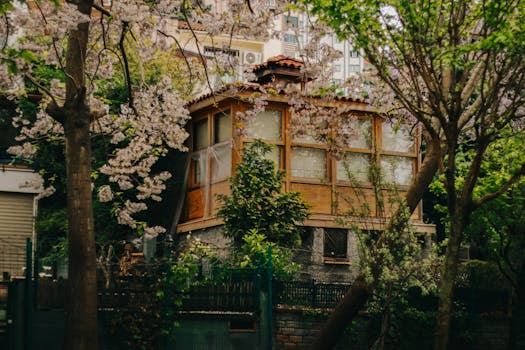
Urban Green Spaces: The Future of Outdoor Living in European Cities by 2025 – WordPress
Urban Green Spaces are becoming increasingly important in European cities, and it’s easy to see why. With the rising concern about climate change, air pollution, and mental health, these green oases are providing a much-needed escape for city dwellers. In this article, we’ll explore the future of outdoor living in European cities and how urban green spaces are leading the way.
What are Urban Green Spaces?
Urban Green Spaces refer to any area in a city that is covered in vegetation, such as parks, gardens, green roofs, and even urban forests. These spaces are designed to provide a range of benefits, including improving air quality, reducing noise pollution, and creating habitats for wildlife. They also offer a peaceful retreat for residents, providing a space to relax, exercise, and socialize.
The Benefits of Urban Green Spaces
The benefits of urban green spaces are numerous. Some of the most significant advantages include:
- Improved air quality: Urban green spaces absorb pollutants and particulate matter, improving the air quality and reducing the risk of respiratory problems.
- Reduced noise pollution: The vegetation in urban green spaces acts as a natural sound barrier, reducing noise pollution and creating a more peaceful environment.
- Increased biodiversity: Urban green spaces provide a habitat for wildlife, supporting local ecosystems and promoting biodiversity.
- Improved mental health: Spending time in urban green spaces has been shown to reduce stress, improve mood, and even reduce symptoms of anxiety and depression.
- Increased social connections: Urban green spaces provide a communal area for residents to meet, socialize, and build connections with their community.
The Future of Outdoor Living in European Cities
By 2025, European cities are expected to have even more urban green spaces, with many cities aiming to increase their green coverage by up to 50%. This shift towards more green spaces is being driven by a range of factors, including government initiatives, community engagement, and advances in technology.
Some of the trends that are expected to shape the future of outdoor living in European cities include:
- Green roofs and walls: These are becoming increasingly popular, providing insulation, reducing energy consumption, and creating habitats for wildlife.
- Urban forests: Many cities are investing in urban forests, which provide a range of benefits, including improved air quality, reduced noise pollution, and increased biodiversity.
- Community-led initiatives: Community-led initiatives are on the rise, with residents coming together to create and maintain their own urban green spaces.
- Smart green spaces: Advances in technology are enabling the creation of smart green spaces, which can be monitored and maintained remotely, reducing the need for manual labor and improving efficiency.
Conclusion
Urban Green Spaces are the future of outdoor living in European cities. By 2025, we can expect to see even more green spaces, with a focus on innovation, community engagement, and sustainability. Whether you’re a resident, a business owner, or simply a visitor, urban green spaces have something to offer everyone. So why not get out and explore your local urban green space today?



